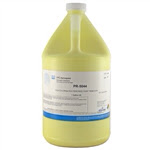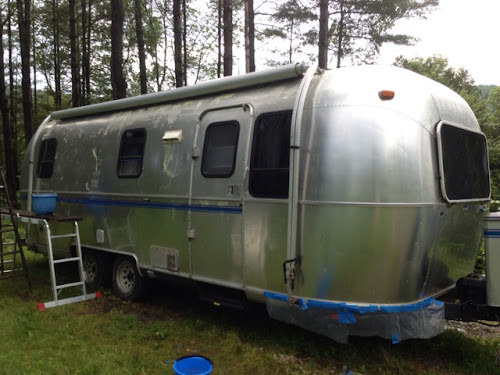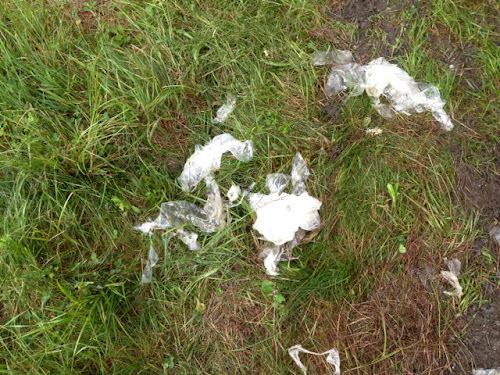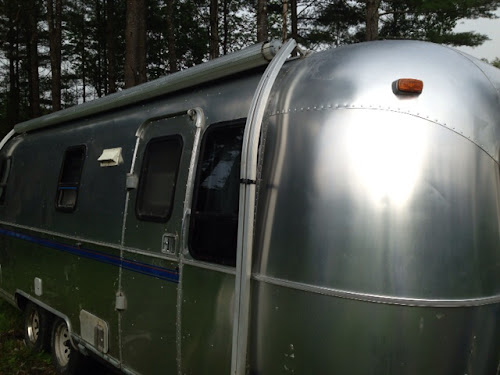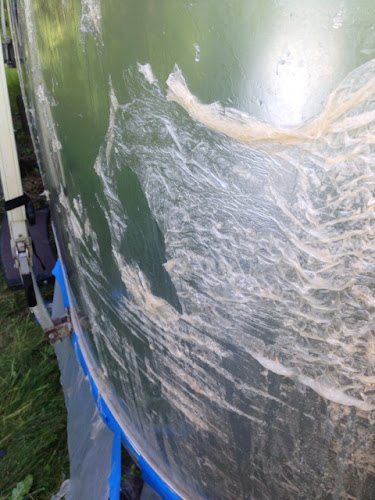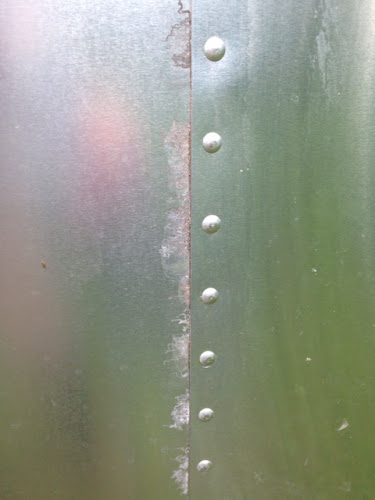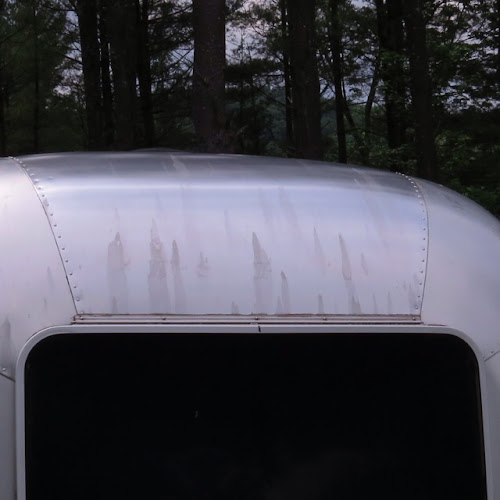Between the weather, which has continued hot and humid with afternoon showers, and the persistent flecks and patches of clearcoat (which have to be removed with dabs of Strypeeze), the polishing is quite a project. As you can see, the top areas I have completed look pretty good. They will next get a pass with a finer polish which should remove most of the swirls and cloudy areas. Of course, I realized the other day that the two replaced panels in back did not have clearcoat, and seem to be a slightly different aluminum. They will polish up but not as shiny but who really cares?
 |
| You can see the contrast between the polished and unpolished areas here on the panel just above the buffer. |
One thing this project has stimulated is my planning for this winter’s trip. I’m reviewing the dozens of campground where we have stayed and lidting the good ones, with sites we like, and also have a “never again list by states.
We’ve had a cold front come through so polishing should be a bit more bearable. It’s fun to chalk off one more section, but there’s always more ahead. Fortunately, we are in no big hurry.

